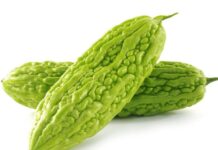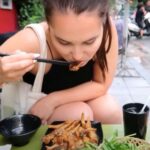The Evolution of a Traditional Market
Raohe Night Market, as it stands today, is not a product of chance but has its roots in a morning market that operated from the early 20th century. The strategic location of this area, centered around the Keelung River port (Xikou), facilitated thriving waterborne trade. During that period, it was a bustling commercial hub where merchants from Keelung and Yilan frequently exchanged goods.
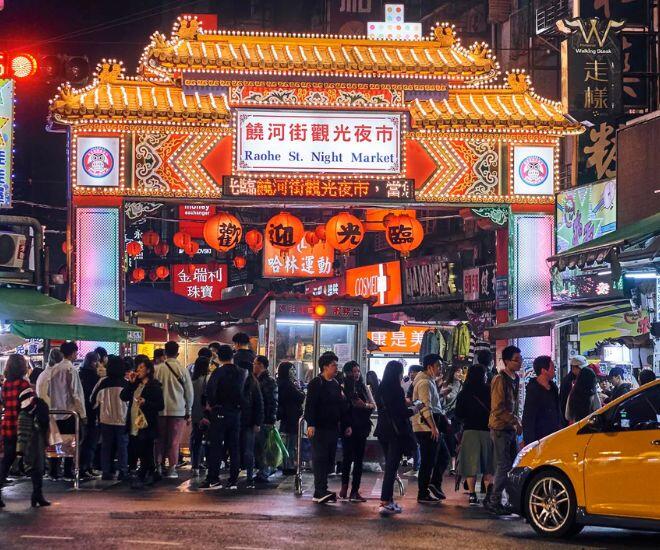
However, the Japanese occupation period from 1895 to 1945 brought about significant changes. The siltation of the Keelung River and new urban planning projects led to a decline in traditional commercial activities. The once-bustling area became less frequented, and the shops gradually disappeared.
A pivotal moment arrived in 1987 when the Taipei authorities made the bold decision to transform this area into the city’s second “tourist night market,” following the success of Shilin Night Market. The goal was not only to revive the local economy but also to create a new night market model that differed from the traditional ones that solely focused on food.
A Diverse Night Market Model
Unlike ordinary night markets, Raohe was designed to integrate three elements: cuisine, shopping, and culture. Initially, the market included clothing, shoes, jewelry, and food stalls. Folk performances and specialty exhibitions were also regularly held to attract tourists.
Over time, however, street food began to dominate and became the market’s main attraction. This shift became particularly evident after 2018 when six stalls at Raohe received the Michelin Bib Gourmand recognition, marking international acknowledgment of Taiwan’s street food quality.
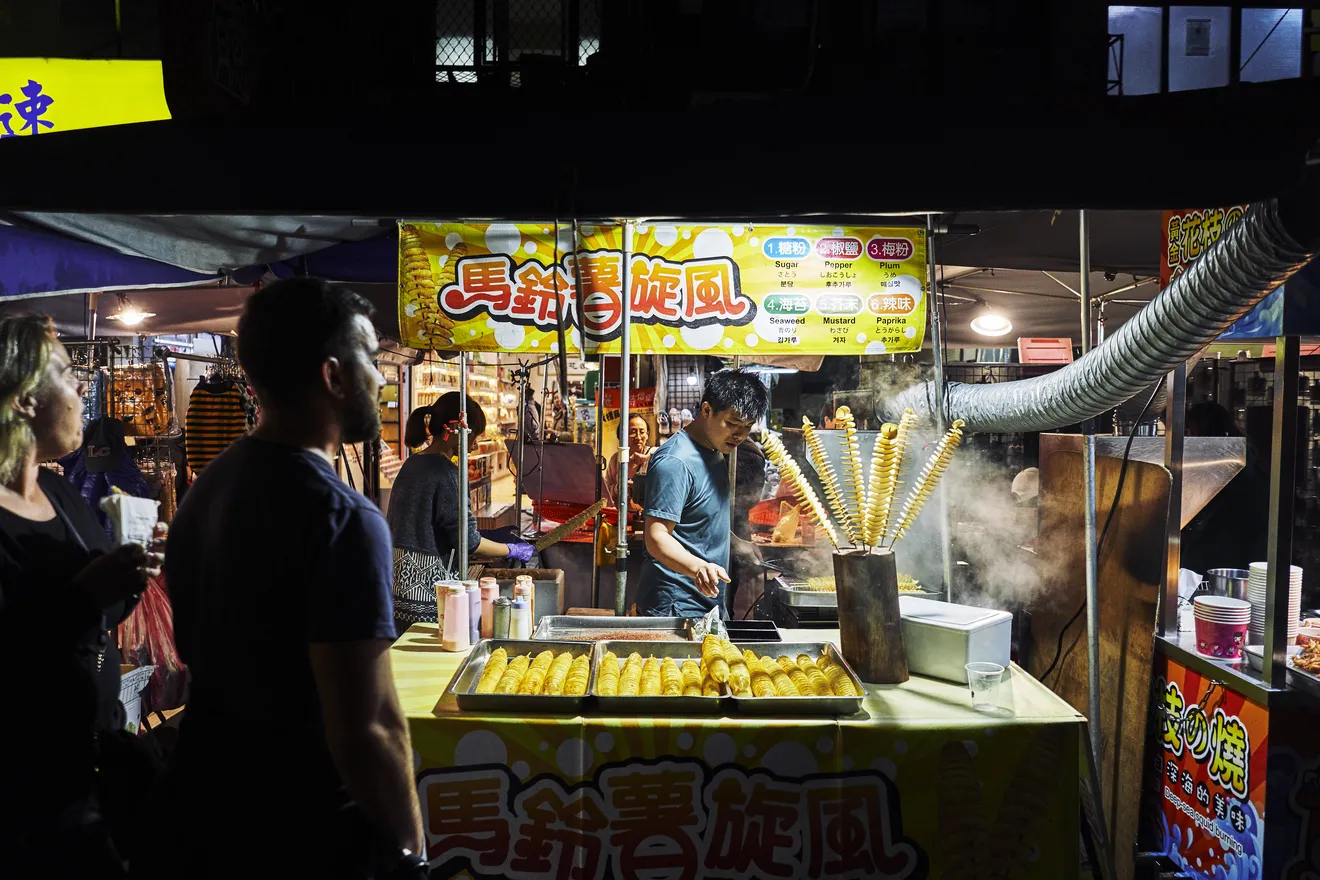
Currently, the market’s structure is stable, with 70% of the stalls dedicated to cuisine, 20% to souvenirs, and 10% to entertainment. With over 400 stalls stretching along Raohe Street, the market has become a complete economic ecosystem.
The period from 2010 to 2025 marked Raohe’s powerful transformation into an international destination. The expansion of the Green MRT line in 2014 significantly improved accessibility for tourists. The promotional campaign “Taipei Night Market Carnival,” launched in 2022, attracted large numbers of visitors from Asia and the West.
According to 2024 statistics, Raohe Night Market welcomes an average of 15,000-20,000 visitors each night, a 30% increase compared to the pre-pandemic period. Of these, 60% are international tourists, mainly from Japan, South Korea, and Southeast Asian countries. The peak hours from 7:00 PM to 10:00 PM can see a density of up to 4-5 people per square meter at popular stalls.
Convenient Location and Transport Connections
Raohe Night Market is conveniently located in the Songshan District, stretching from the intersection of Bade Road (Section 4) and Fuyuan Street to the Ciyou Temple area. This location is not only easily accessible but also allows for combining visits to nearby tourist attractions.
Ciyou Temple, an important religious site dedicated to the sea goddess Matsu, built in 1757, sits right at the market’s entrance. It features a unique glazed tile roof architecture and a golden statue of Matsu. The Rainbow Bridge, just a 10-minute walk from the market, spans the Keelung River and offers a fantastic nighttime view with its LED lights that change color according to different themes.

The modern public transport system makes it easy for tourists to reach the market. Songshan Station on the Green MRT line (Songshan-Xindian Line) is just a 5-minute walk from Exit 5 to the market entrance. Bus routes 204, 205, 306, and 605 also have convenient stops at Songshan Tobacco Factory or Ciyou Temple.
A Culinary Treasure Recognized by Michelin
The highlight of Raohe Night Market is the six stalls recognized by the Michelin Bib Gourmand, transforming it into an international street food destination. Among them, the most notable is Fuzhou Black Pepper Buns, a unique delicacy with a crispy crust baked in a traditional clay oven.
The filling of these buns consists of minced pork blended with black pepper, onion, and shiitake mushrooms, resulting in an unforgettable savory taste. Despite the affordable price of only 70 TWD (approximately 50,000 VND), this stall often has long queues, especially during the golden hours from 6:00 PM to 9:00 PM.
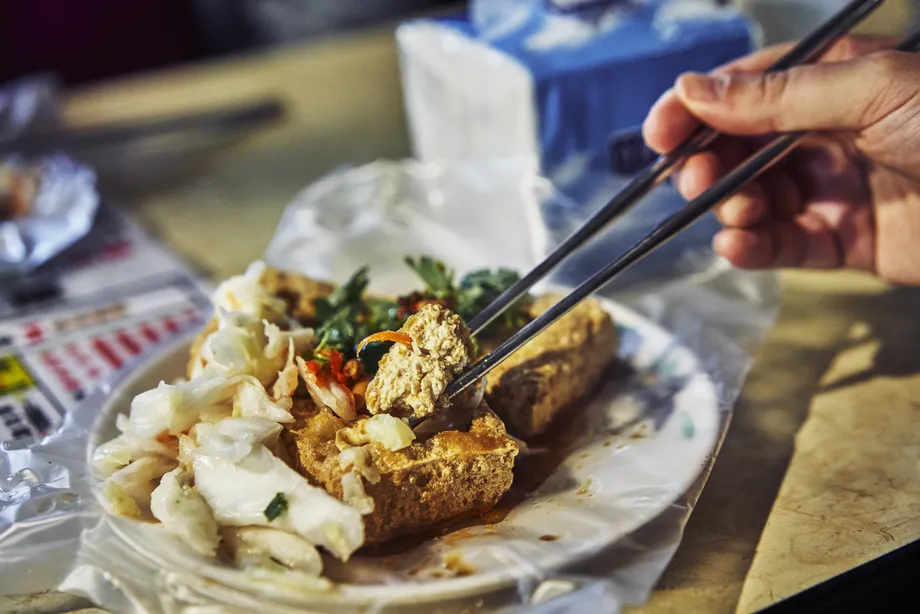
Chen Dong Pork Ribs Medicinal Herbs Soup is a dish that embodies the essence of traditional Chinese medicine. The soup is cooked with 12 precious herbs and has a natural sweetness from white radish and jujubes. It is not only delicious but also nourishing. At 100 TWD per bowl, it is an ideal choice for those who want to experience health-enhancing cuisine.
Shi Jia Braised Pork Rice represents the traditional flavors of local cuisine. The pork belly is marinated in black soy sauce and Shaoxing wine, resulting in an appealing color and a rich taste. This dish is usually accompanied by pickled cucumbers to balance the flavors.
A Variety of Local Specialties
In addition to the Michelin-recognized dishes, Raohe Market is famous for its Oyster Vermicelli, a must-try dish when visiting Taiwan. This dish combines chewy vermicelli, fresh oysters, and a broth made from pork bones, enhanced with coriander and dried chili.
The Stinky Tofu at Raohe is considered the “fragrantest” in Taipei due to its three-day fermentation process. After fermentation, the tofu is deep-fried and served with pickled cucumbers. Despite its distinctive odor, this dish has an enticing flavor and is an experience not to be missed.
For vegetarians, the Vegetarian Rice Noodle Soup stall offers an excellent choice with its broth made from seaweed and shiitake mushrooms, accompanied by fried tofu and seasonal vegetables.
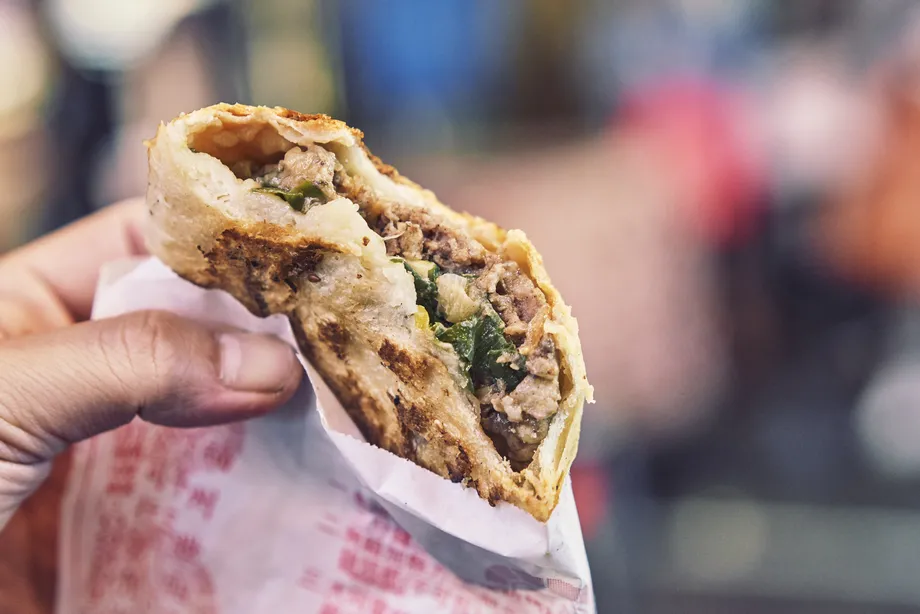
Bubble Milk Tea is a must-have drink when visiting night markets. Raohe’s special version includes a layer of salty cheese cream on top, creating a unique combination of salty and sweet flavors.
Mango Shaved Ice, made with fresh mango slices, coconut ice cream, and black tapioca pearls, is the perfect dessert to conclude your meal.
A Wealth of Cultural Experiences
Raohe Night Market is not just a place to indulge in culinary delights but also offers a diverse cultural space. Visitors can explore the ancient architecture of Ciyou Temple and participate in the sea goddess worship ceremonies held on the 23rd of every lunar month, accompanied by lion dances and traditional firecrackers.
Combining a visit to the Rainbow Bridge at night provides a fantastic visual experience. After enjoying the market’s cuisine, one can take a stroll along the Keelung River, enjoying the fresh air and modern urban landscape.
Annually, in December, the market hosts the “Raohe Food Festival,” an event that gathers 50 street chefs from all over Taiwan. This is an opportunity for tourists to witness unique cooking techniques and taste newly introduced dishes.
During the seventh lunar month, the “Ghost Month Night Market Tour” is held, featuring traditional offerings such as steamed rice cakes and lotus leaf rice dumplings, offering an intriguing insight into Taiwanese folk beliefs.
Tips for Visitors
For the best experience, visitors should arrive at the market before 6:30 PM or after 10:00 PM to avoid the crowds. Food stalls operate from 5:00 PM to midnight, while souvenir shops usually close earlier, at 10:30 PM.
Regarding payment methods, while cash is still predominant, 40% of the stalls now accept EasyCard (Taiwan’s public transport payment card), and 20% support electronic wallets such as LINE Pay. The average price for a filling meal is 150-200 TWD (approximately 100,000-140,000 VND).

Haggling is feasible for fashion items like handbags and leather wallets, with potential discounts of 20-30% off the listed price. However, haggling is not customary at food stalls. Visitors should be cautious of pickpockets in crowded areas near the main entrance, especially on weekends.
The “Raohe Food Map” app, available for free on the App Store and Google Play, helps tourists locate Michelin-recognized stalls and make reservations. The “Free Walking Tour” program, led by local volunteers, departs daily at 6:00 PM from the information station near the Ciyou Temple entrance.
Raohe Night Market today is not just a culinary destination but also symbolizes the entrepreneurial spirit, dynamism, and adaptability of the Taiwanese people. Each stall and dish tells a story of tradition, innovation, and the aspiration to reach the world of this vibrant community.













